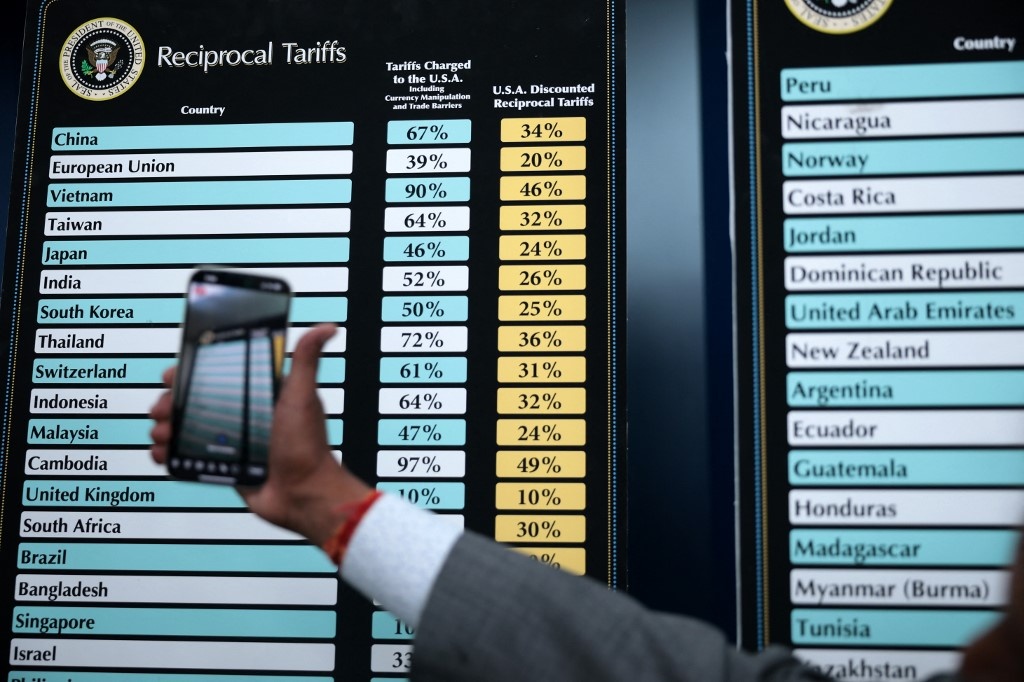“It all makes sense…until it doesn’t.”
It’s now eight weeks since my prostate surgery and I’m delighted (and relieved) to report that my recent PSA test came back “below 0.06” – effectively undetectable. It’s the best result I could have hoped for and I plan to hold onto that little number like my life depends on it – which, in many ways, it does.
Unfortunately, like a new global pandemic, I have come down with a new ailment: Trump Confusion Syndrome. It’s a prognosis that I first came across via financial commentator John Mauldin – and it’s proving to be extremely prevalent and widespread. The symptoms? A confused state whereby an individual can sympathise with some Trump policies whilst being concerned about the way in which they are implemented – and then despairing about others.
Welcome to “Liberation Day!”
This past week was marked by what Donald Trump has coined “Liberation Day”, which was the unveiling of his latest trade policy: sweeping new tariffs aimed at virtually every major US trading partner. The headlines are eye-watering: 60% tariffs on Chinese imports, 10% minimum on most others, and what Strategas estimates to be a $600 billion annual tax increase – the largest in modern US history.

The rationale? Reciprocity. The method? A somewhat opaque formula that seems to punish countries like Vietnam (who were encouraged to pick up China’s slack) with a proposed 46% tariff. As our CIO Kevin Boscher put it in his recent macro update: “This would likely spark a full-blown global trade war, seriously damage the global economy, push inflation much higher, and cause a significant hit to both corporate earnings and markets.” This is more than a policy detail; it’s a potential macroeconomic shock.
Here’s the thing: like many, I can find myself nodding along with some of Trump’s strategic goals. Reducing US reliance on adversarial economies? Sensible. Rebalancing trade to encourage domestic manufacturing? Hard to argue with.
But it’s being executed through blunt instruments, sweeping generalisations, and – let’s be honest – economic logic with which you would struggle to pass a GCSE Economics exam. It might help to see this instead as a political-cum-geopolitical move dressed up in economics. There is really only one target (China) but the global economy is the collateral damage. To paraphrase Keynes, can Trump stay resolute longer than markets remain volatile?
As Mauldin put it this week, the tariff strategy amounts to “economic policy malpractice” and risks tipping the US into recession. Tariffs are taxes, plain and simple – and they’re paid not by foreign exporters, but by American consumers and businesses. They push up prices, compress margins, and create a world of uncertainty for everyone involved.
The US isn’t just taxing consumer goods. Around 45% of US imports are inputs for its own manufacturers – meaning the policy is also punishing the very businesses it’s trying to help. Ford lost $750 million in profits under the last Trump tariff regime. GM lost $1 billion. Aluminium giant Alcoa sought exemptions from its own industry tariffs. Harley-Davidson moved production offshore to avoid retaliation.
And now we’re doing it all over again. Only this time, the exemptions are gone. The scope is broader. The message to global markets is, at least for now, buckle up!
There’s also the bigger-picture concern: the risk to the US dollar’s position as the world’s reserve currency. The US benefits enormously from this “exorbitant privilege”, but it relies on openness, liquidity, and global trust. As Mauldin notes, overseas investors now hold $16.5 trillion in US equities – a record share. Undermining that relationship through arbitrary tariffs and policy volatility risks long-term capital flows, not just short-term sentiment.
And if foreign confidence starts to erode? The US could find itself in a situation where it’s trying to fund deficits and stimulate growth in a far less forgiving global market.
So, what does it mean for investors?
First, a moment of calm. As Mauldin says, “American businesses will do what they do best, which is adapt.” The likelihood of recession has increased, but it’s not inevitable. We’ve weathered confusion before, and we’ll do it again.
More importantly, we don’t build portfolios based on politics or personalities – particularly not ones who communicate via social media outbursts. But we do pay close attention to economic fundamentals and particularly to long term investment themes and structural shifts that may impact them positively or negatively. Our underlying investment premise, which was forged during the financial crisis of 2008 (and the core of that team is still here today!), was to identify investment themes capable of helping us manage client portfolios through a storm – all the while ensuring they are fit for purpose over the longer term. We recently highlighted that our portfolios continue to evolve as we take into account changing market dynamics and, in light of these tariff announcements, a fundamental change in the way trade is executed globally.
It will come as no surprise that we expect excessive market volatility for a while yet. Markets will overreact; they’ll underreact; and they’ll rally and fall based on whether there’s an off-ramp, a tweet, or a photo-op with a world leader. That’s not a game we want to play. We’ll keep focusing on what we can control: owning quality, managing risk and focusing on achieving both the medium- and longer-term objectives of our clients.
As ever, it’s easy to get caught up in the noise, especially when headlines scream and markets twitch. But if the last six weeks have taught me anything personally, it’s that clarity and focus really matter. Whether it’s a PSA test result or an investment strategy, clear thinking and an understanding of the objectives remain key – and far more preferable and useful to noise, bluster and emotionally-driven decision-making.


